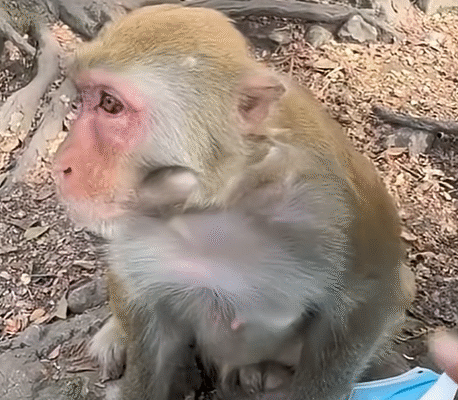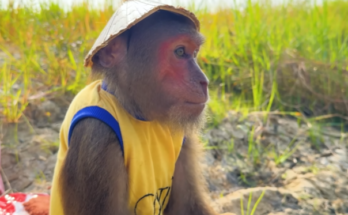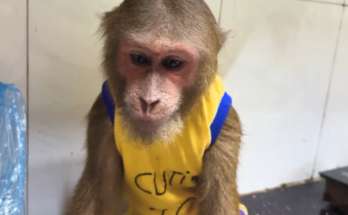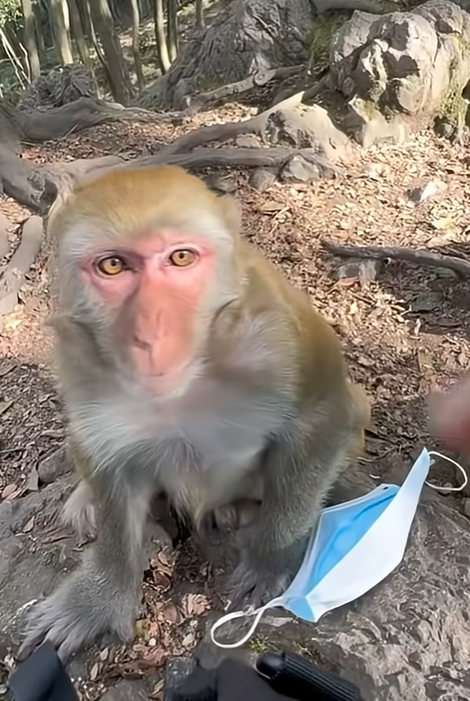
Laughter is one of the most universal experiences in the world. It bridges gaps between cultures, languages, and even species. And when it comes to pure, unfiltered comedy, few animals rival the monkey. With their mischievous antics, expressive faces, and uncanny ability to mimic human behavior, monkeys have become nature’s comedians. From the jungles of Asia and Africa to bustling tourist destinations and viral internet videos, monkeys never fail to make us laugh.
Their charm is universal because it speaks to something deep within all of us: the joy of play, curiosity, and unexpected surprises. Watching a monkey in action is like witnessing a live comedy show — unpredictable, clever, and endlessly entertaining.
1. The Playful World of Monkeys 🌴🐵
In the wild, monkeys are constantly moving, exploring, and interacting with each other in ways that are both amusing and astonishing. Young monkeys chase one another through treetops, wrestle with siblings, and experiment with everything they can touch. Every leap, tumble, and squeak is a potential laugh-out-loud moment.
Scientists studying primates have discovered that many monkeys produce vocalizations remarkably similar to human laughter. When tickled or engaged in playful rough-and-tumble, they emit short, rhythmic sounds that indicate joy. Even their body language — bouncing, rolling, and making exaggerated gestures — mirrors our own expressions of happiness.
In many ways, the jungle is their stage, and every day is a new performance. Each group of monkeys has its own set of “characters”: the prankster, the grumpy elder, the curious explorer, and the baby clown who unintentionally steals the show.
2. Mimicry: The Monkey Comedy Skill 🎭
One of the funniest things about monkeys is their ability to imitate. They watch humans carefully, noting how we move, eat, and react — and then they exaggerate it for comedic effect.
Tourists have been caught on camera laughing hysterically as monkeys imitate their gestures. One macaque in a popular temple area grabbed a tourist’s hat and wore it askew, tilting it proudly while sitting on a stone railing. Another monkey watched a person drinking water and, within seconds, found a bottle, unscrewed it, and pretended to drink — only to spill it all over itself, looking utterly bewildered.
This mimicry is not just imitation; it’s performance. Monkeys observe, analyze, and then execute actions that are amusing to humans, showing that humor can cross the species barrier.
3. The Snack Heist: Comedy in Action 🍌🍫

No account of monkey humor would be complete without their love of food — and their hilarious ways of getting it. Monkeys are notorious for stealing snacks, sometimes in elaborate ways that resemble slapstick comedy.
Imagine sitting in a market, enjoying a bag of chips or peeling a banana, when a monkey suddenly darts from behind a stall, snatches your food, and climbs a tree with remarkable agility. But the comedy doesn’t end there. Many monkeys eat with exaggerated gestures, staring boldly at the person they stole from, or fanning themselves with the wrapper as if to announce their victory.
One famous video shows a monkey stealing an ice cream cone from a child, taking a cautious lick, then making a face at the cold treat. The child’s reaction, combined with the monkey’s dramatic expression, created a moment of pure comedic gold.
4. Monkey Selfies: The Internet Phenomenon 📸😎
In the modern world, monkeys have become accidental digital comedians. Cameras and smartphones give them a new stage for their antics. Many monkeys have been caught taking selfies, pressing buttons on cameras, or playing with video screens, resulting in some of the funniest internet content ever.
A notable example is the case of Naruto, a macaque who took a selfie with a wildlife photographer’s camera. The image — a big toothy grin with perfect framing — went viral, capturing the imagination of people worldwide. Since then, countless videos show monkeys interacting with technology: checking themselves in the reflection, tapping at phones, and creating hilarious “self-portraits.”
It’s fascinating to watch: the monkey may not understand the concept of a photo, but it knows the object is interesting and fun to play with. The result is comedy that’s spontaneous, clever, and endlessly entertaining.
5. Baby Monkeys: Tiny Clowns of the Forest 🍼🐒
Baby monkeys take comedy to another level. Their boundless energy, curiosity, and innocent mischief create moments that are impossible to resist.
One viral video shows a baby monkey attempting to climb a human’s leg, only to tumble backward and land in a heap — then immediately get up and try again, squealing in excitement. Another clip shows a baby monkey playing with a hat that is far too big, tripping and falling while trying to walk around like it owns the place.
Even simple behaviors — rolling in leaves, chasing shadows, or playing with other animals — take on a comic quality because of their tiny size, exaggerated movements, and expressive faces. Baby monkeys remind us that laughter often comes from the simplest things: curiosity, play, and unexpected mishaps.
6. Mirror, Mirror: Monkey vs. Reflection 🪞😂
Another classic source of monkey comedy comes from mirrors. When a monkey encounters its reflection for the first time, the reaction is priceless.
Some stare in disbelief, trying to figure out who this “other monkey” is. Others become defensive, puffing up their chests, baring their teeth, or making noises to intimidate the reflection. Many try to groom the mirror monkey, only to be confused when nothing happens.
One baby monkey was filmed doing a complete “peek-a-boo” routine, hiding behind the mirror and jumping out repeatedly, squealing with delight. The mirror antics of monkeys demonstrate how expressive and imaginative they are, and cameras make it possible for humans to share in the hilarity.
7. Pranks and Mischief: Comedy in Motion 😈
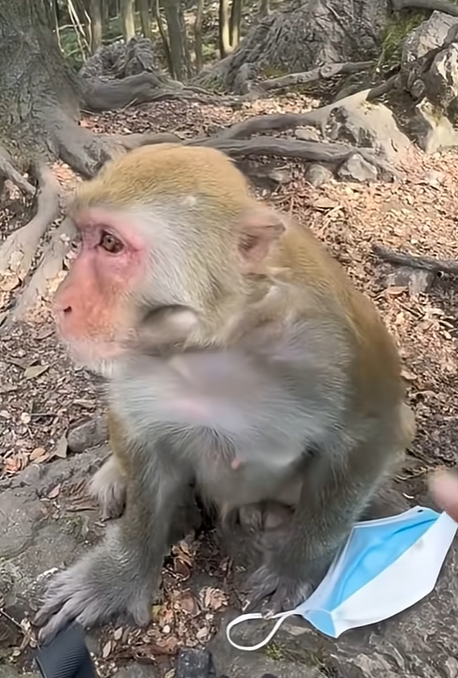
Monkeys are natural pranksters. In their interactions with humans and each other, they display timing and cleverness that rivals professional comedians.
One viral video shows a monkey stealing a tourist’s sunglasses, trying them on, and walking away confidently while the tourist scrambles to retrieve them. In another, a group of monkeys discovered a soda vending machine. They pressed buttons, shook the machine, and cheered when a can finally fell — only to drink it upside down, spilling soda everywhere.
Even in their social groups, monkeys prank one another. They tug at tails, hide objects, or chase each other around trees in elaborate games. The timing, facial expressions, and unexpected outcomes make these moments pure comedy.
8. Monkeys in Modern Life: Adapting with Humor 🚗👜
Monkeys’ ability to thrive in human environments has led to countless funny encounters. In urban areas, monkeys have been filmed climbing onto scooters, opening doors, stealing hats, and even pretending to drive.
One video shows a monkey hopping onto a parked car, honking the horn repeatedly, then pretending to drive off, with a look of mischievous satisfaction. Another monkey in a market sat on a cash register, pressing buttons as if running the shop, occasionally picking up fruit and inspecting it carefully.
These interactions reveal both their intelligence and their sense of humor. They adapt to modern life, not just surviving but turning everyday objects into props for their comedy routines.
9. Why Monkey Comedy Is Universal 🌍🐒
What makes monkey comedy so universally appealing is its relatability. Humans recognize the emotions behind the antics: curiosity, surprise, mischief, joy, and frustration. Watching a monkey fumble with a coconut, steal a snack, or mimic human behavior mirrors our own experiences, and that connection makes us laugh.
Furthermore, monkeys express joy physically and vocally, making it easy to understand across cultures. Their laughter, gestures, and exaggerated reactions are instantly recognizable as comedy, regardless of where you are in the world.
10. The Masters of Comedy 🏆🐵
Monkeys are not only funny, but they are also masters of timing, improvisation, and audience engagement. They know how to grab attention, exaggerate movements, and create tension that resolves in a laugh — all without realizing they are performing.
Whether it’s a baby monkey tripping over a branch, a group of macaques stealing fruit, or a monkey taking a perfect selfie, their antics are spontaneous, clever, and relatable. Unlike scripted comedy, monkey humor is raw and authentic, making it all the more captivating.
They remind us of the joy of play, the thrill of curiosity, and the importance of laughter in everyday life. Watching them laugh, play, and act silly encourages us to find humor in our own world, to embrace spontaneity, and to never take life too seriously.
11. The Takeaway: Laughter Knows No Species 🐒💛
Monkeys prove that laughter is truly universal. Across jungles, temples, markets, and viral videos, their antics connect humans and animals in a shared moment of joy. Their ability to surprise, mimic, and play highlights the fact that humor is a part of life itself — not something exclusive to humans.
Every stolen snack, unexpected tumble, or mirror encounter reminds us to embrace curiosity, playfulness, and joy. Monkeys are living proof that laughter transcends language, culture, and even species.
So the next time you watch a monkey climb, stumble, prank, or pose, remember: you are witnessing one of the true masters of comedy. Their performances are natural, spontaneous, and universally hilarious. And in their laughter, we can see a reflection of our own delight.
Laughter is universal, and monkeys are the masters of comedy. 🐒📸😂
The End.
